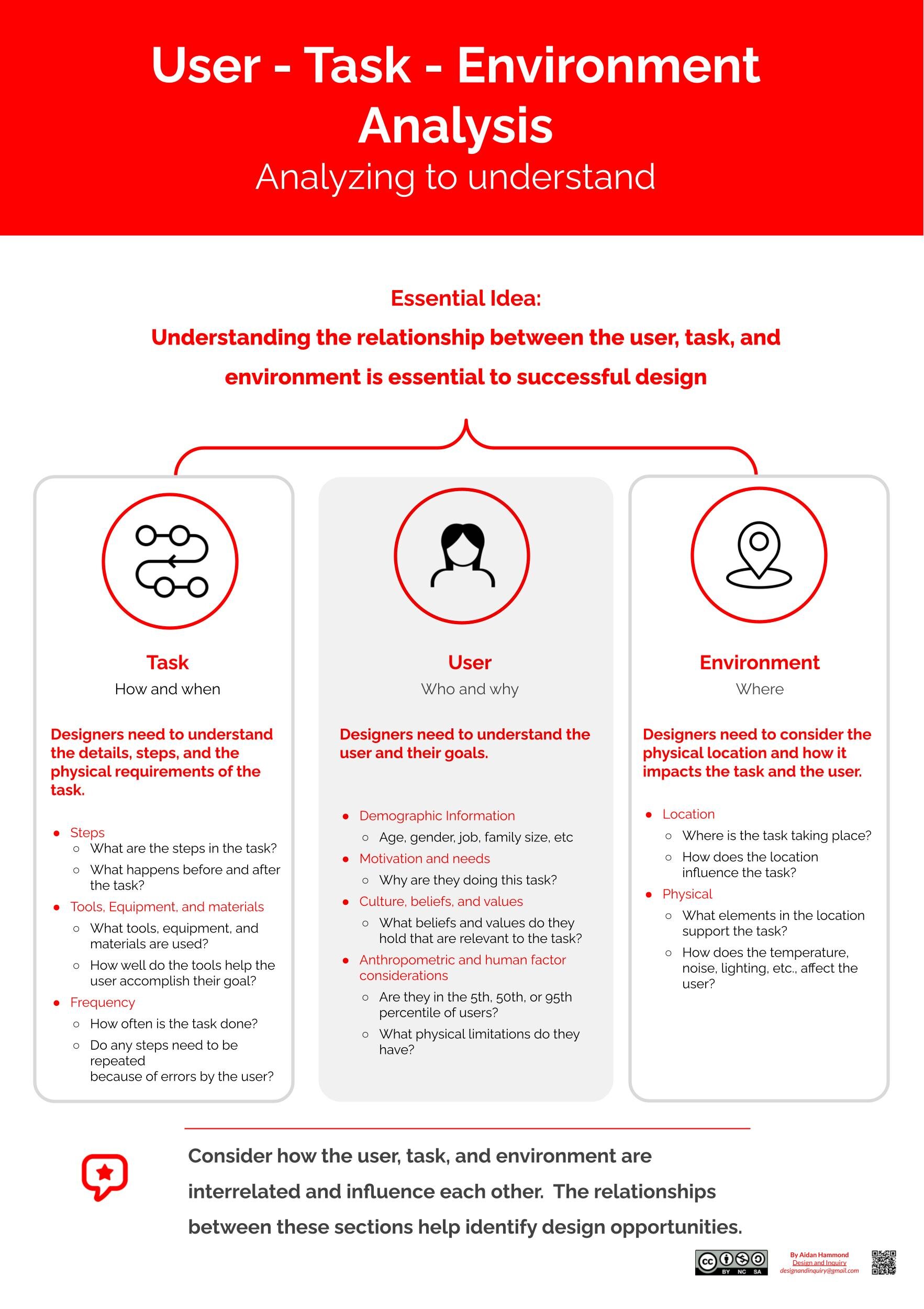Empathy is the driving force behind a successful design thinking project. Understanding the needs of the user is the key to successful design.
In our MYP G10 classes we have been working with students to apply this understanding to design problems that meet the needs of users. In general, students understand the importance of this approach and desire to create meaningful solutions for their intended users.
Over the past year, we have been looking more closely at the UCD framework, specifically with Task-User-Environment analysis, as a tool that students can use. Taking this idea from the IBDP Design Technology HL course content (Topic 7 - User Centered Design), we’ve developed a set of questions that students can begin to apply to their inquiries.
Students use these questions as a starting point for their research and analysis, to begin thinking and learning about the problem from the users’ perspective. Within the MYP Design Cycle, we use this framework to help develop several sections. The slides below break down these into steps, and help guide the students in how to incorporate this into their inquiry.
At certain points in the inquiry cycle, we ask students to focus or make specific reference to these three aspects
A1: Explaining the need for a solution for a user
We ask students to present their analysis here using evidence from their A2 research, and highlighting elements of the task, user, and environment to frame the problem.
A2: Organizing primary and secondary research in the research plan
We ask students to organize their research to investigate into the three areas, using NoodleTools to organize their research.
A4: Developing a Design Brief
In the requirements of their design brief, students identify how each requirement is related to one or some of the aspects: task, user, or environment.
B1: Organizing design specifications, particularly those related user group and performance
Students use their research and design brief to develop design specifications. In this section, we ask students to consider how the specifications meet the needs of the user and help the designer accomplish their task.
D4: Evaluating the impact of the design.
When evaluating the impact of the design, students consider how it meets the needs of the user, performs the task, and works within the environment.
All of these questions and considerations are presented in a poster below:

